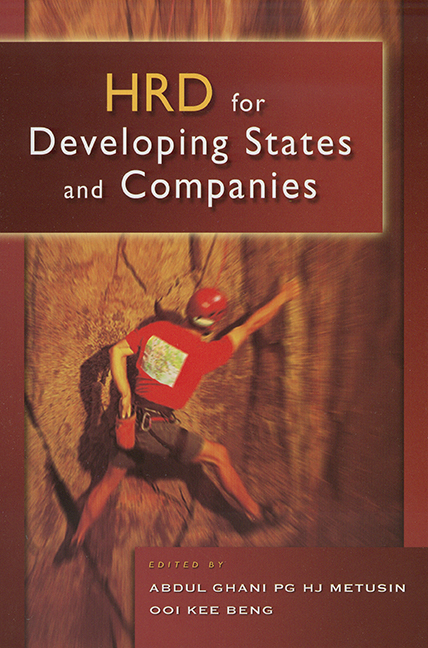Book contents
- Frontmatter
- Contents
- Foreword
- Preface
- Editorial Remarks
- Acknowledgements
- Introduction
- HRD for Statesmen
- HRD Strategies for Companies
- Competence Development
- 13 Creating Sustainable Competitive Advantage Through People and Culture
- 14 Maximizing Workforce Efficiencies with Effective Change Management
- 15 The Rise of the High Performance Learning Organization
- 16 Performance Measurement and Management
- 17 Strategies to Help People Learn and Perform
- 18 Maximizing Talent for Maximizing Result
- 19 How Investing in Human Capital can Translate Positively into the Organization'sPerformance — The Role of Benchmarking
- Corporate Experiences
- About the Authors
19 - How Investing in Human Capital can Translate Positively into the Organization'sPerformance — The Role of Benchmarking
from Competence Development
Published online by Cambridge University Press: 21 October 2015
- Frontmatter
- Contents
- Foreword
- Preface
- Editorial Remarks
- Acknowledgements
- Introduction
- HRD for Statesmen
- HRD Strategies for Companies
- Competence Development
- 13 Creating Sustainable Competitive Advantage Through People and Culture
- 14 Maximizing Workforce Efficiencies with Effective Change Management
- 15 The Rise of the High Performance Learning Organization
- 16 Performance Measurement and Management
- 17 Strategies to Help People Learn and Perform
- 18 Maximizing Talent for Maximizing Result
- 19 How Investing in Human Capital can Translate Positively into the Organization'sPerformance — The Role of Benchmarking
- Corporate Experiences
- About the Authors
Summary
What this chapter highlights is the importance of benchmarking in human resource management (HRM). Benchmarking is a process of evaluating a corporation'sown weaknesses and learning from top performers. It involves analysing how these top performers carry out key processes that are targeted at improving business performance and understanding the underlying reasons behind the implementation of these key processes. One must first stress the need to put a value on human capital, something that is often sidelined. There are many means for measuring HRM'scontribution to business, especially in how contributions are quantified. Benchmarking is thus indispensable and much authority can be gained from quantifiable evidence in shaping HRM'sprocesses as well as justifying its relevance and centrality to business operations.
THE VALUE OF HUMAN CAPITAL
The fact that human resources are traditionally categorized under cost in an organization'sbalance sheet implies that a chair is perceived as having greater value to an organisation than HR, since the furniture is listed as an asset in the balance sheet. This is ironic because physical assets depreciate over time while human assets continue to appreciate. Thus, we see the importance of quantifying contributions made by HRM to overall business goals. There is always a discrepancy between an organization'sbook value and its market value. A study of market-to-book ratios over time has shown that for every dollar of book value, $6 of market value is created. The discrepancy between book value and market value is attributed to intangible factors such as human capital. Under this broad banner of human capital are factors such as leadership quality and workforce productivity, engagement and capability.
- Type
- Chapter
- Information
- HRD for Developing States & Companies , pp. 138 - 148Publisher: ISEAS–Yusof Ishak InstitutePrint publication year: 2005



